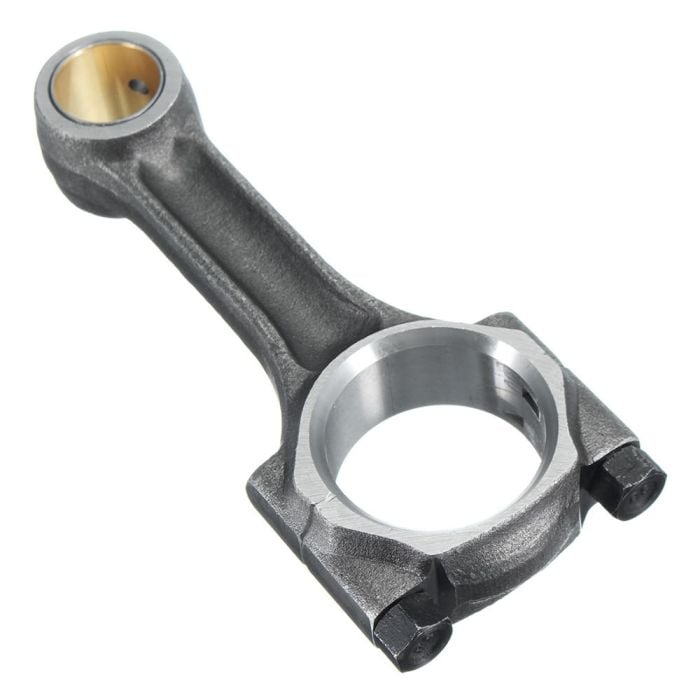Replace a state-of-the-art clp engine for better performance.
Replace a state-of-the-art clp engine for better performance.
Blog Article
Just How a Clp Engine Can Improve Performance in Various Industries
The arrival of CLP engines marks a substantial shift in functional effectiveness across numerous industries, driven by their capacity to optimize gas intake and lessen downtime. As companies increasingly prioritize sustainability along with performance, the role of CLP engines becomes also more important.
Review of CLP Engines
CLP engines, or Continual Fluid Propellant engines, represent a significant advancement in propulsion technology, particularly for room applications. These engines make use of a continual feed system that enables the sustained expulsion of propellant, resulting in improved effectiveness and performance contrasted to conventional solid or hybrid propulsion systems. By keeping a consistent flow of fluid propellant, CLP engines can accomplish much more precise thrust control, which is crucial for steering spacecraft in different mission scenarios.
The layout of CLP engines incorporates advanced materials and cutting-edge gas administration systems. clp engine. This leads to reduced weight and enhanced dependability, important elements for long-duration room missions. Furthermore, the continuous procedure minimizes the threat of burning instability, a common challenge in standard rocket engines.

Benefits in Manufacturing
The manufacturing of Constant Liquid Propellant (CLP) engines presents several notable benefits that enhance both efficiency and cost-effectiveness. One of the key advantages is the structured manufacturing procedure, which reduces the intricacy associated with standard propulsion systems. By making use of fluid propellant, suppliers can achieve better accuracy in engine performance, causing optimized energy result and lowered waste.
Furthermore, CLP engines help with a higher level of modularity, enabling much easier integration into numerous manufacturing lines. This adaptability can considerably lower preparations and enhance overall functional flexibility. Making use of CLP modern technology likewise tends to lessen the requirement for extensive upkeep because of less relocating components, which equates into lowered downtime and operational costs.

Applications in Logistics
Leveraging Continual Fluid Propellant (CLP) engines in logistics offers significant advantages in operational effectiveness and integrity. These engines provide a robust service for different transport requirements, making it possible for the smooth activity of items across vast ranges. The fundamental style of CLP engines enables for constant power output, which equates into smoother and a lot more predictable transportation routines.
Among the vital applications of CLP engines in logistics remains in sturdy products transport, where browse around these guys they can drive both ground and aerial vehicles. Their capacity to maintain high efficiency under differing lots conditions guarantees that delivery timelines are fulfilled, therefore improving customer complete satisfaction. Additionally, CLP engines can be incorporated into automated logistics systems, helping with real-time tracking and maximizing path planning.
In addition, the durability of CLP engines lowers upkeep downtime, allowing logistics firms to maximize their operational capacities. This is especially advantageous in warehousing procedures, where effectiveness in handling and moving products is crucial. As logistics proceeds to progress, the integration of CLP engines stands for a forward-thinking approach that not just enhances efficiency however additionally sustains the industry's expanding needs for dependability and rate.
Influence On Energy Performance
How do Constant Fluid Propellant (CLP) engines improve power efficiency in transport? CLP engines utilize a regular flow of fluid fuel, enhancing burning processes and preserving a secure drive output. This style minimizes energy losses related to standard combustion engines, where gas delivery can vary and bring about ineffectiveness.
The continuous operation of CLP engines permits a more reliable thermal cycle, resulting in greater particular impulse contrasted to conventional engines. clp engine. This equates to minimized fuel usage for the same amount of job done, significantly reducing functional costs throughout various transport sectors, including aeronautics and maritime industries
Additionally, the ability of CLP engines to maintain optimal efficiency under differing load conditions reduces the requirement for regular velocity and slowdown, better enhancing fuel effectiveness. Boosted power performance not only adds to cost savings however likewise causes reduce greenhouse gas exhausts, lining up with worldwide sustainability objectives.
Future Trends and Innovations
Arising innovations in Continual Fluid Propellant (CLP) engine modern technology assurance to revolutionize the landscape of transport efficiency and sustainability. As industries pivot towards greener choices, CLP engines stand at the center, incorporating cutting-edge products and style approaches that enhance efficiency while decreasing ecological influence.
Among one of the most appealing patterns is the fostering of crossbreed systems that integrate CLP engines with renewable resource resources. This harmony can enhance fuel consumption and decrease emissions, straightening with international sustainability goals. Additionally, advancements in computational liquid dynamics (CFD) are assisting in the layout of more aerodynamically reliable engines, causing decreased drag and improved fuel efficiency.
Moreover, the development of wise monitoring systems is established to enhance functional efficiencies. These systems take advantage of information analytics and IoT innovation to maximize engine performance in real-time, making sure that the engines run within my site their most efficient criteria.
As research continues to discover alternative propellant solutions-- such as biofuels and synthetic fuels-- the future of CLP engines looks encouraging. By harnessing these advancements, sectors can not only enhance their performance but likewise add dramatically to a cleaner, much more lasting future in transport.
Conclusion
To conclude, CLP engines stand for a substantial development in performance across several markets. Their ability to enhance gas consumption and decrease operational expenses, incorporated with a continuous feed system, improves power outcome and functional integrity. The assimilation of innovative materials and fewer moving parts reduces maintenance demands, while positioning with sustainability objectives settings CLP engines as a crucial technology useful link for the future. Continued development in this area guarantees more renovations in performance and ecological efficiency.
Report this page